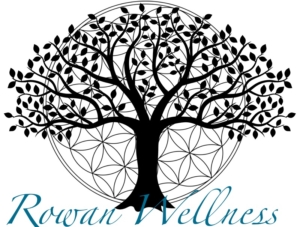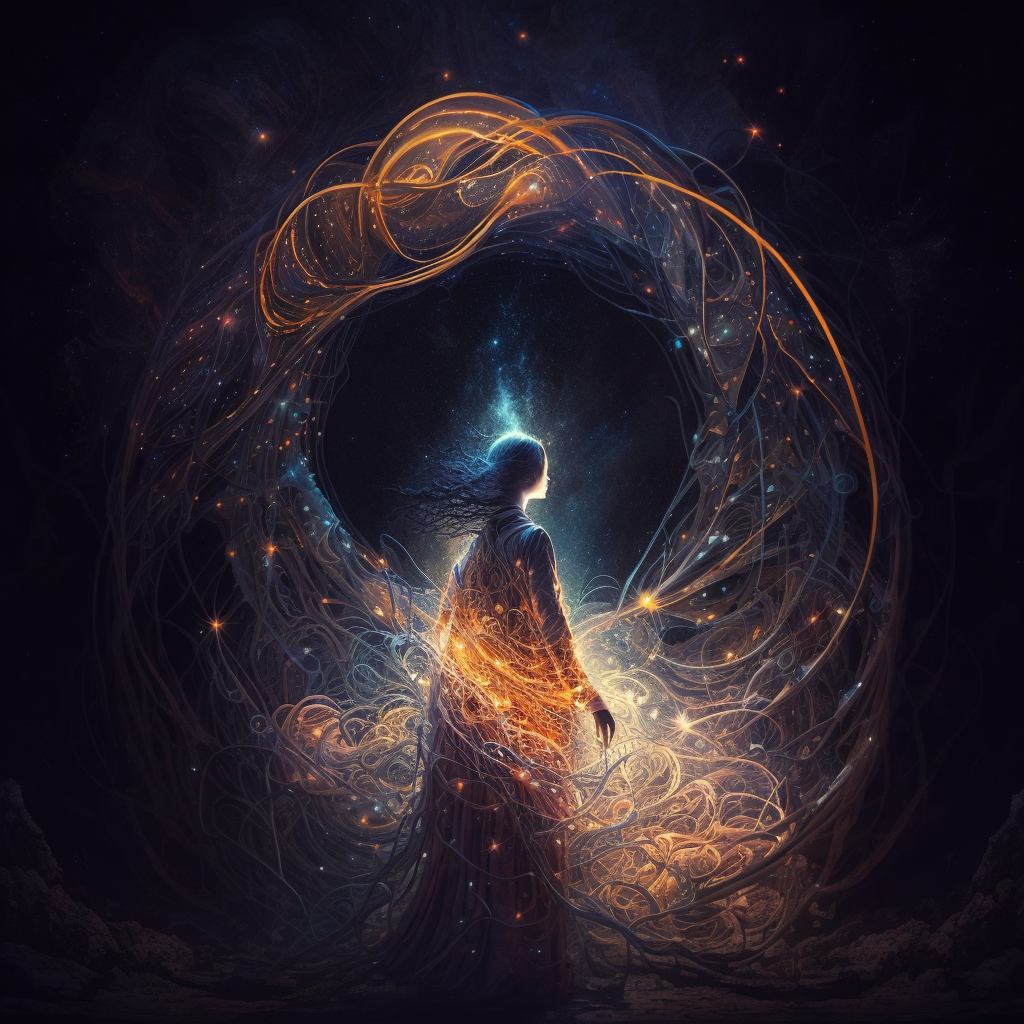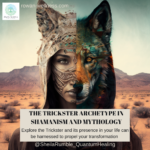What is the Sacred Imagination?
The Sacred Imagination is a spiritual faculty that allows us to access a higher realm of consciousness and connect with the divine. It is the ability to see beyond the limitations of the physical world and experience the mystical, the unseen, and the divine. Unlike imagination and delusion, the Sacred Imagination is a spiritual channel that allows us to perceive other realities and cosmic truths.
“The imagination is the key to the ultimate mystery of the world…Imagination is more important than knowledge. For knowledge is limited, whereas imagination embraces the entire world, stimulating progress, giving birth to evolution.”
– Albert Einstein
How is the Sacred Imagination Different from Fantasy and Delusion?
Because it is based on spiritual truth, the Sacred Imagination differs from fantasy and delusion. The Sacred Imagination is a spiritual faculty that enables us to recognize spiritual facts and truths that lie outside the realm of the senses. Delusion, on the other hand, is a false belief that is not based in reality, particularly when ample evidence exists to the contrary, whereas fantasy is frequently associated with escapism and the creation of stories or situations that facilitate this escape. Furthermore, escapism often falls into two categories – Self-Suppression and Self-Expansion. Self-Expansion might look like imagining possibilities for the future that could potentially facilitate soul growth. Self-Suppression tends to revolve around attempts to forget or suppress anything perceived as dangerous to the ego.
Fantasy, as you can see above, isn’t necessarily negative. Self-expansive forms of fantasy – like brainstorming – can produce a variety of ideas and potential avenues of exploration. It might also lead to creative and artistic inspiration. In some cases, a very potent form of fantasy (considering many possibilities) followed by refinement via the sacred imagination can lead to profound spiritual insights.
“The sacred imagination is the power of the mind to imagine new worlds, to see visions of the divine, and to create beauty and meaning out of chaos and suffering.”
– Andrew Harvey
How Can One Distinguish Between the Three?
It can be difficult to distinguish between fantasy, delusion, and the Sacred Imagination, but there are some important distinctions to bear in mind. Fantasy frequently has unfounded wants, wishes, or whims as its foundation. Delusion is a false opinion or belief that is unfounded in reality and may come from a mental disorder or illness. On the other hand, the Sacred Imagination is based in spiritual truth and revelation and enables us to discern spiritual truths that lie outside of our physical realm.
Ask yourself these questions if you’re having trouble determining which aspect – Sacred Imagination, Fantasy, or Delusion – is coming into play:
- Sacred Truth doesn’t mind being questioned. When you’re truly accessing the Sacred Imagination, it is expected, even encouraged, to ask questions. There is a process of examination whereby one drills down, refining understanding.
- Sacred Truth is empowering and respects your divine sovereignty. “Empowering” does not mean soft and fluffy; it’s rooted in constructive compassion that propels you forward on your path of soul growth.
- Truth accessed via the sacred imagination doesn’t need external validation. There’s an inherent power associated with the sacred imagination that can stand on its own, without support and despite attack.
- Sacred Truth transcends perspective. While that state is exceedingly difficult, if not impossible, to reach while we’re incarnated in human form, we can increasingly approach that point. What this looks like are fewer and fewer “exceptions to the rule.”
DELUSION ◀︎▶︎ FANTASY (Self-Suppressing) ◀︎▶︎ FANTASY (Self-Expansive) ◀︎▶︎ SACRED IMAGINATION
We can see that Fantasy is often the pivot point between delusion and the sacred imagination. As we evolve from delusional states into the sacred imagination, fantasy is a necessary stop on the journey.
“The sacred imagination is a way of seeing the world that is both visionary and practical, both mystical and grounded in reality.”
– Matthew Fox
The War on the Sacred Imagination in Modern Society and New-Age Spirituality
Take an objective look around our modern-day society or spend one day in a conventional classroom. Our society has become obsessed with fast-food one-size-fits-all modes of thought and mental processing. Our educational systems rarely cater to multiple learning styles, discourage creative thought, and promote “one right answer” philosophies.
Now after generations of that type of early-age conditioning in schools, we now see a society that lacks critical thinking skills and is unable to determine delusion from fantasy and fantasy from divine communication. We’re unable to determine truth because we’ve lost an understanding of what constitutes proof and validation. Instead, we’ve been conditioned to act like trained parrots, only repeating what has been drilled into us over and over again by the authority. Unfortunately, that same authority is often low on scales of emotional maturity and spiritual development.
This deliberate multi-generational conditioning has spilled over into society, which now reflects “cancel culture” and (alluding to The Matrix movie) the “Mr. Smith Syndrome.” These constructs do not allow for multiple viewpoints or curiosity, and they are the death blow to the sacred imagination. Even some of the big players in the New Age Spirituality movement fall under this umbrella as their egos dabble in profitable click-bait fantasy and delusion presented as spiritual truth.
Why is this so? Because individuals that have a highly developed sense of discernment and can access divine truth on their own aren’t manipulatable. Put groups of those people together and you have a society that becomes “uncontrollable” and unprofitable.
(For direct evidence of this, look at the war on psychedelics. Psychedelics, we have been conditioned to believe, are dangerous and lead to addiction and are classified as Schedule I drugs in the U.S. The reverse is true; most psychedelics are extremely safe and do not hold a risk of addiction. Many psychedelics are efficacious in treating addictions, depression, anxiety, PTSD, and more. Why? Because they are a direct doorway into the sacred imagination, where greater truths empower and heal. Compare this to alcohol and tobacco; these top two on the risk of harm to self or other, and risk of addiction are perfectly legal.)
There are ways to reverse this – through conscious and deliberate development of discernment and striving to access and rely upon our Sacred Imaginations as much as possible.
How is the Sacred Imagination Helpful in the Process of Ascension?
The Sacred Imagination is a powerful tool that can help us in our spiritual ascension. It enables us to communicate with the divine, reach higher states of awareness, and get spiritual direction and understanding. Exploration in this realm additionally allows us to access deeper healing for ourselves, our relationships, and humanity as a whole. Our Sacred Imagination leads us to cosmic truths and away from limiting perceptions. We can strengthen our spiritual practices, make more meaningful connections with the divine, and feel more content, joyful, and purposeful by developing the Sacred Imagination.
“The sacred imagination is the wellspring of hope, inspiration, and transformation. It is the force that enables us to imagine a better world and to work towards making it a reality.”
– Michael Meade
What is Discernment and How Does it Relate to Our Sacred Imagination?
Distinguishing between good and evil, truth and falsehood, and right and wrong is the act of discernment. It allows us to distinguish between whether we are using our Sacred Imagination or a more base type of fantasy or delusion. It is the capacity to distinguish between what is and is not in line with our better selves and divine purposes. On the spiritual path leading to ascension, discernment is a crucial ability because it aids us in navigating the numerous options and obstacles we face.
As it enables us to recognize how the divine is at work in our lives, discernment is frequently referred to as a blessing of the Holy Spirit in the context of spiritual ascension. Through discernment, we can distinguish between the voice of the ego and the voice of the soul, and make decisions that align with our true mission and highest good.
Discernment is an intuitive process rather than an intellectual one. It calls for us to tap into our innate wisdom and pay attention to our soul’s nudges. It starts with a willingness to be curious and is facilitated by releasing attachments to being right or wrong or maintaining the status quo. By engaging in mindfulness exercises, meditation, prayer, and forging stronger bonds with the divine and our better selves, we can strengthen our discernment.
Differentiating between authentic instructors, teachings, and spiritual practices is one of the biggest obstacles on the spiritual path. Numerous practices and paths declare to lead to enlightenment and spiritual development, but not all of them are in line with our true selves and the greatest good. We can choose the route that is most in line with our divine purpose by using discernment to determine what resonates and what does not.
Discernment is crucial for navigating the many difficulties and hurdles we run into while traveling the spiritual path. It enables us to identify the underlying reasons for our difficulties and to make decisions that will promote our healing and development. Discernment enables us to see past the ego’s delusions and to grasp the more profound truths of our spirit.
Discernment is an essential skill to develop and practice as someone on a spiritual path. It is the mechanism – the action – that allows us to access our sacred imagination.
How to Develop the Sacred Imagination
There are various methods for developing the Sacred Imagination. Here are some recommendations:
- Exercise and develop discernment by getting curious and by releasing attachments to being right or wrong (in a social context).
- Pray and meditate regularly. Prayer and meditation are effective ways to communicate with the divine and open the Sacred Imagination. Set aside some time each day to meditate, communicate with your inner self, and hear from God.
- Immerse yourself in spiritual teachings – Reading spiritual texts, going to lectures, and studying spiritual teachings can all help you to develop your Sacred Imagination and increase your knowledge of spiritual truths.
- Spend time in nature – Being in nature can help to awaken your sensibilities, help you feel more connected to the natural world, and help you become more aware of the spiritual aspects of creation.
- Take part in creative pursuits – Imagination-stimulating pursuits like writing, drawing, or painting can help you communicate with the Sacred Imagination.
- Seek solitude and quiet – Our world is extremely sensory-intensive. Television (even the news), movies, music, social media, and more are all designed to capture and hold our attention. To do this, they utilize intense lighting and loud volume. These overwhelm our more delicate extra-sensory organs of perception. Additionally, they use strategies that hijack the nervous system; gratuitous nudity and sex scenes, graphic violence, intense emotional prompting, and more. Limiting screens and auditory inputs can drastically aid in one’s ability to access the Sacred Imagination.
- Reset the nervous system – States of [Fight / Flight / Freeze / Fawn] impair our ability to access our Sacred Imaginations. These states are often accompanied by fear, and fear pushes us towards Self-Suppressive forms of fantasy and delusion. All of the above techniques can help greatly with shifting us from sympathetic (SNS) to parasympathetic (ANS) responses, drastically increasing our ability to access our Sacred Imaginations. Additionally, consider cold-water therapy, magnesium supplementation (see our article for more information), and improved sleep habits (see our article for suggestions) to facilitate and improve your ability to access information and guidance from your Sacred Imagination.
In conclusion, the Sacred Imagination is a spiritual faculty that allows us to connect with the divine and access higher levels of consciousness. It is different from fantasy and delusion in that it is grounded in spiritual truth and revelation. By cultivating the Sacred Imagination through meditation, prayer, immersion in spiritual teachings, spending time in nature, and engaging in creative activities, we can deepen our spiritual practices and experience a greater sense of peace, joy, and purpose in our lives.
References
- Barry, W. A. (2009). The Sacred Imagination: A Guide to Finding Meaning and Purpose in Our Lives. Loyola Press. ISBN: 978-0829433119. https://www.loyolapress.com/products/the-sacred-imagination
- Einstein, Albert. “What Life Means to Einstein: An Interview by George Sylvester Viereck.” The Saturday Evening Post, vol. 198, no. 26, 1925, pp. 17-18, 114-17, www.saturdayeveningpost.com/wp-content/uploads/satevepost/what_life_means_to_einstein.pdf
- Harvey, A. (n.d.). The sacred imagination. Andrew Harvey: The Institute for Sacred Activism. https://www.andrewharvey.net/sacred-imagination
- Fox, M. (1996). The reinvention of work: A new vision of livelihood for our time. HarperSanFrancisco.
- Meade, M. (n.d.). The Power of the Sacred Imagination. Retrieved March 14, 2023, from https://www.mosaicvoices.org/power-of-the-sacred-imagination/
- Stenseng, F., Rise, J., & Kraft, P. (2012). Escapism among players of MMORPGs: Conceptual clarification, its relation to mental health factors, and development of a new measure. International Journal of Mental Health and Addiction, 10(5), 849-862. doi: 10.1007/s11469-011-9354-y
- Stenseng, F., Pallesen, S., Andreassen, C. S., & Vedaa, Ø. (2015). Brief report: Workaholism and work-related escapism among Norwegian workers. Journal of Occupational and Organizational Psychology, 88(3), 553-557. doi: 10.1111/joop.12110
- Stenseng, F., Rise, J., & Kraft, P. (2021). Escapism across leisure activities: Scale refinement and validation among adults. Leisure Sciences, 1-16. doi: 10.1080/01490400.2021.1885669
- Johnson, M. W., Griffiths, R. R., Hendricks, P. S., & Henningfield, J. E. (2018). The abuse potential of medical psilocybin according to the 8 factors of the Controlled Substances Act. Neuropharmacology, 142, 143-166. https://doi.org/10.1016/j.neuropharm.2018.01.004
- Carhart-Harris, R. L., Bolstridge, M., Rucker, J., Day, C. M. J., Erritzoe, D., Kaelen, M., … & Nutt, D. J. (2016). Psilocybin with psychological support for treatment-resistant depression: an open-label feasibility study. The Lancet Psychiatry, 3(7), 619-627. https://doi.org/10.1016/S2215-0366(16)30065-7
- Griffiths, R. R., Johnson, M. W., Carducci, M. A., Umbricht, A., Richards, W. A., Richards, B. D., … & Klinedinst, M. A. (2016). Psilocybin produces substantial and sustained decreases in depression and anxiety in patients with life-threatening cancer: A randomized double-blind trial. Journal of psychopharmacology, 30(12), 1181-1197. https://doi.org/10.1177/0269881116675512
- Sessa, B. (2018). The Psychedelic Renaissance: Reassessing the Role of Psychedelic Drugs in 21st Century Psychiatry and Society. Routledge. https://www.taylorfrancis.com/books/9781351053667
- Nutt, D. J., King, L. A., & Nichols, D. E. (2013). Effects of Schedule I drug laws on neuroscience research and treatment innovation. Nature Reviews Neuroscience, 14(8), 577-585. https://doi.org/10.1038/nrn3530
Schedule a Session With Me
If you’d like to go deeper in a supportive, healing environment, please visit my scheduling page.




